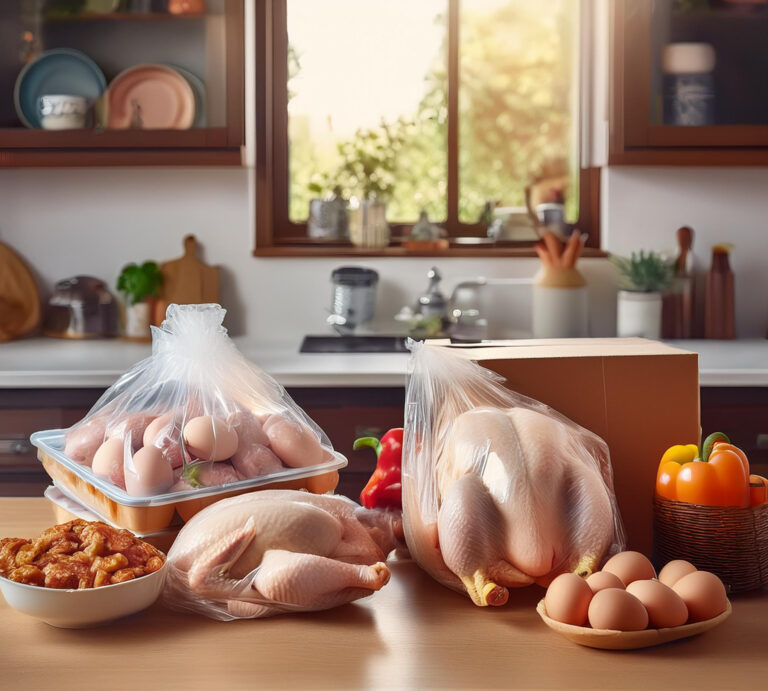Food recalls are a serious matter, and when it comes to something as widely consumed as chicken, it’s important to stay informed. In recent years, there have been several nationwide chicken recalls due to contamination risks, including bacteria like salmonella and listeria. This comprehensive guide will provide all the details about the latest chicken recalls, the health risks involved, and how you can ensure your family’s safety.
Why Chicken Recalls Happen
Chicken is one of the most commonly consumed meats around the world, and while food safety regulations are strict, mistakes and contamination can still happen. Chicken recalls are usually issued when there’s a risk of contamination by harmful bacteria, foreign objects, or when the product is mislabeled.
Common reasons for chicken recalls include:
- Bacterial Contamination: This is one of the most common reasons for chicken recalls. Harmful bacteria like salmonella and listeria can contaminate chicken during processing and pose a serious health risk.
- Foreign Objects: There have been cases where metal, plastic, or other foreign objects are found in processed chicken products, prompting recalls.
- Mislabeling: In some cases, chicken products are recalled because they were mislabeled. This can be particularly dangerous for people with food allergies.
Learn more about food safety and the risks of contamination.
Recent Chicken Recalls in 2024
January 2024 – Salmonella Contamination In early 2024, a large-scale recall was issued due to potential salmonella contamination. Several batches of pre-packaged chicken breasts and thighs were found to be contaminated during routine inspections. Affected products were distributed nationwide through major grocery chains.
March 2024 – Foreign Object Contamination Another major recall occurred in March 2024 when several brands of frozen chicken nuggets were recalled after consumers reported finding plastic and metal shards in the product. The recall affected several brands, and consumers were advised to check their freezers for any potentially dangerous products.
May 2024 – Listeria Outbreak A nationwide recall of rotisserie chicken was issued in May 2024 after an outbreak of listeria was traced back to contaminated products. Listeria is a harmful bacterium that can cause serious illness, especially in pregnant women, young children, and the elderly.
Stay updated on recent food recalls and outbreaks.
Health Risks Associated with Contaminated Chicken
When chicken is contaminated, the health risks can be severe, particularly if harmful bacteria like salmonella or listeria are involved.
- Salmonella
Salmonella is one of the most common foodborne illnesses. It can cause symptoms like nausea, vomiting, diarrhea, fever, and abdominal pain. In severe cases, it can lead to hospitalization, especially in vulnerable populations like the elderly, infants, and those with compromised immune systems.- Prevention: Thoroughly cook chicken to an internal temperature of 165°F to kill any potential bacteria. Always wash hands and surfaces that come into contact with raw chicken.
- Listeria
Listeria is another bacterium that can be found in contaminated chicken. It can cause flu-like symptoms such as fever, muscle aches, and nausea. Pregnant women, newborns, and people with weakened immune systems are particularly at risk.- Prevention: Listeria can survive in cold temperatures, so it’s important to cook chicken thoroughly and store it properly to avoid contamination.
- Foreign Object Injuries
Consuming chicken products contaminated with foreign objects such as plastic or metal can cause physical harm, including choking or internal injuries.
Read more about the health risks of foodborne illnesses.
How to Check if Your Chicken Is Part of a Recall
If you’ve heard about a chicken recall nationwide, you might be wondering if your products are safe to eat. Here’s how to check:
- Check the USDA Website
The USDA regularly updates their website with information about food recalls, including detailed lists of affected products, batch numbers, and expiration dates. You can check the USDA’s Food Safety and Inspection Service (FSIS) recall page to see if any of the chicken in your fridge or freezer is affected.Visit the USDA recall page. - Inspect Product Labels
Look at the packaging for the establishment number, which is usually printed inside the USDA mark of inspection. Compare it with the affected batch numbers listed in the recall notice. - Contact the Manufacturer
If you suspect that a chicken product you’ve purchased is part of a recall, contact the manufacturer directly. They can provide information on what to do with the product and whether it’s safe to consume.
What to Do If You Have Recalled Chicken
If you find out that you have a chicken product that’s part of a nationwide recall, it’s essential to take immediate action. Here’s what you should do:
- Do Not Consume
If the product is contaminated with bacteria or foreign objects, consuming it could lead to serious health issues. Discard it immediately or return it to the store for a refund. - Dispose of Safely
Wrap the contaminated product securely in plastic and dispose of it in a way that ensures no one else can accidentally consume it (e.g., raccoons, pets, etc.). - Clean and Sanitize
Clean and sanitize any surfaces, cutting boards, utensils, or refrigerators that came into contact with the recalled chicken to prevent cross-contamination. - Report Illnesses
If you or someone in your household becomes ill after consuming recalled chicken, seek medical attention immediately and report the illness to your local health department.
Find out how to handle recalled products safely.
How to Protect Yourself from Future Chicken Recalls
While food recalls can’t always be predicted, there are steps you can take to protect yourself and reduce the risk of consuming contaminated chicken:
- Buy from Reputable Sources
Purchase chicken from trusted brands and stores that follow stringent safety standards and regularly inspect their products. - Stay Informed
Sign up for food recall alerts from the USDA and FDA to get notifications whenever a recall is issued. This can help you act quickly before consuming potentially dangerous products. - Proper Cooking and Storage
Always cook chicken to an internal temperature of 165°F and store raw chicken in the refrigerator at 40°F or below. Follow food safety guidelines to avoid cross-contamination. - Use a Meat Thermometer
A meat thermometer ensures that chicken is cooked to the proper temperature to kill harmful bacteria. Never rely solely on visual cues to determine if your chicken is fully cooked.
Frequently Asked Questions
What should I do if I already ate recalled chicken?
If you’ve consumed chicken that has been recalled, monitor yourself for any symptoms of foodborne illness, such as nausea, vomiting, diarrhea, or fever. If you experience any symptoms, seek medical attention immediately.
How often do chicken recalls happen?
While chicken recalls are not an everyday occurrence, they do happen several times a year due to contamination risks or labeling errors. Staying informed and following food safety practices can help protect you from the risks.
Can I return recalled chicken to the store?
Yes, most retailers will allow you to return recalled chicken for a refund, even if it has been opened or partially consumed.
Conclusion
Staying informed about nationwide chicken recalls is essential for protecting your health and the health of your family. By understanding the risks of contaminated chicken and taking the proper precautions, you can minimize your exposure to harmful bacteria like salmonella and listeria. Always check your chicken products for recall notices, and remember to follow proper food safety practices when handling, cooking, and storing chicken. By staying vigilant, you can keep your family safe from foodborne illnesses.



